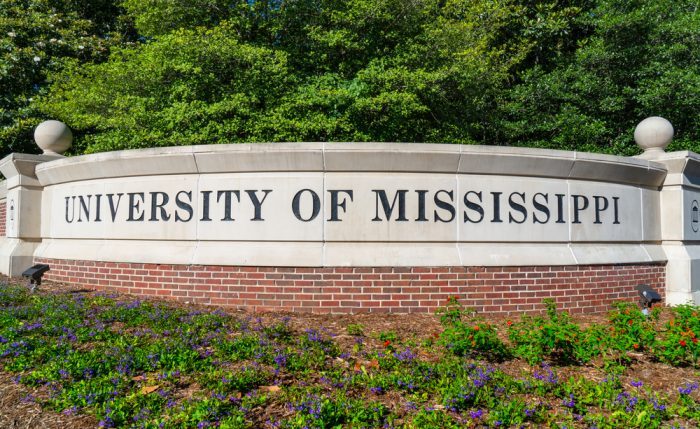The government just needs to get out of its own way when it comes to cannabis research.
The U.S. Food and Drug Administration has approved only two cannabis-based drugs for medical use, despite broad medical consensus that cannabis helps a variety of ailments. Countless hours of cannabis research have led to better patient outcomes, but not nearly as much as possible. This is, of course, thanks to the slow-moving bureaucracy of the U.S. government.
Patients in legal states are often left to their own devices to read and absorb the troves of clinical studies and case reports outlining the benefits and limitations of cannabis-based medicine. While doctor education could help, far more responsibility for our needlessly sick population lies with the labyrinthine approval system that oozes its way through the federal government with the speed of cold molasses.
Essentially, the government is blocking patient access to cannabis. But to understand exactly how, it helps to understand how the government regulates cannabis research.
Clinical Trials are an Important Last Step
Before any new drug is approved for sale and prescription in the United States, it must undergo a battery of research and testing. The Food and Drug Administration wants to ensure the drugs it approves for the market don’t hurt people (or that they hurt people in only minor, expected, and treatable ways).

This is a good idea, in theory. In practice, however, the FDA complicates the outcomes. The agency runs along two separate lines. Its first duty as a regulatory body is charged with protecting American consumers from danger. That part of the agency serves a legitimate and much-needed purpose.
Things turn bleak, however, when the agency bends to political influence – its second function. All government institutions operate on a continuum between politics and technical know-how. But some politicians, especially those who run on anti-government platforms, have a vested interest in making sure that the federal bureaucracy is slow and inefficient.
Before cannabis research can translate into federally approved drugs, the FDA requires carefully designed and controlled clinical trials to determine the safety and efficacy of the drugs in question.
The Convoluted Process of Getting Cannabis Drugs to Market
While many states allow doctors to prescribe weed for all kinds of medical needs, the federal government still insists more cannabis research is necessary. And not just research. It demands completed documents, forms, and applications en masse.
The federal government requires clinical trials involving human subjects before most drugs can gain FDA approval. The process is a slow slog for any drug. But it’s twice as sluggish for weed. Scientists must conduct cannabis research with bud from a solitary source: one farm at the University of Mississippi. In order to get this, researchers must apply for and gain approval from the National Institute on Drug Abuse.
After a researcher applies, the farm tells them which strains are available, and in what quantities.

The researchers use that information to complete an Investigational New Drug (IND) application to the FDA. That process is laborious and difficult. The agency claims it has clear guidelines for researchers to follow, but then points applicants to this thirty page gobbledygook of a handbook. If the application is approved, the agency will issue a pre-IND approval. But the cannabis research still can’t start.
After receiving pre-IND approval, the researcher must contact the DEA to receive a license to conduct research on a Schedule I substance. That means another round of applications and approvals.
If the researcher makes it that far, clearing whatever hurdles the FDA, DEA, and NIDA put in its path, they must submit all the materials back to the FDA to obtain a final IND.
Then, and only then, can federally allowable cannabis research begin.
What Cannabis Research Needs
Clearly we need a more efficient process for the millions of Americans who live in areas where medicinal weed is prohibited or limited. We need the FDA’s accelerated approval method for fast-tracking new drugs to market.
Accelerated approval started in 1992 as a way to turbocharge much-needed drugs through regulation. In order for a drug to gain accelerated approval it must be reasonably proven to help patients by demonstrating an ability to affect a substitute. For example, a cancer drug proven to shrink tumors could be sent to market even if it hasn’t been proven to extend patients’ lives because a very reasonable person could see that shrinking tumors will extend patients’ lives.
In other words, it shortens the approval process by a good bit.

The shrinking tumors example is the one that the FDA’s own website uses. And, you know what? Cannabis research has shown that medical weed actually shrinks tumors, too.
So why isn’t cannabis on the fast-track to federal approval? It’s not clear. There’s no reason why it shouldn’t be, but it isn’t.
Working Around Regulation
Too many politicians who take Big Pharma’s money run the federal government. So, they’re unlikely to clear away hurdles for cannabis research. Luckily, individual states have stepped up. Medicinal cannabis has opened the gates for patients to access more medicine, which is undeniably good. But it has left gaping holes in national treatment. And the patchwork of treatment options have limited the medical community’s ability to learn from doctors in other states and share information easily.
The best thing the government can do for cannabis research is to get out of the way.





